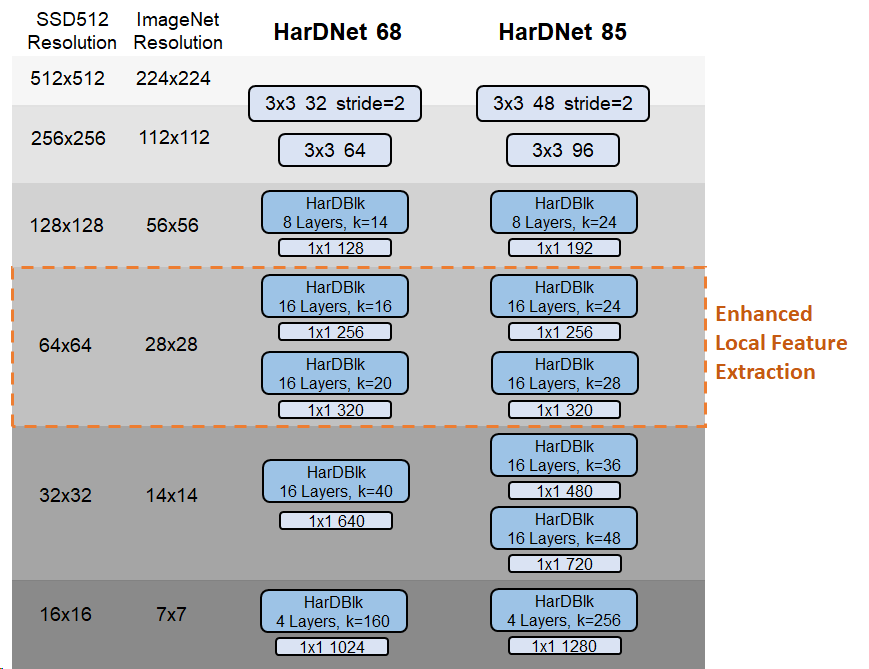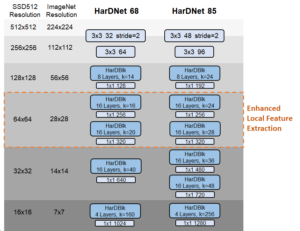HarDNet


import torch
model = torch.hub.load('PingoLH/Pytorch-HarDNet', 'hardnet68', pretrained=True)
# or any of these variants
# model = torch.hub.load('PingoLH/Pytorch-HarDNet', 'hardnet85', pretrained=True)
# model = torch.hub.load('PingoLH/Pytorch-HarDNet', 'hardnet68ds', pretrained=True)
# model = torch.hub.load('PingoLH/Pytorch-HarDNet', 'hardnet39ds', pretrained=True)
model.eval()
所有预训练模型都要求输入图像以相同的方式进行归一化,即由形状为 (3 x H x W) 的 3 通道 RGB 图像组成的小批量数据,其中 H 和 W 预计至少为 224。图像必须加载到 [0, 1] 范围内,然后使用 mean = [0.485, 0.456, 0.406] 和 std = [0.229, 0.224, 0.225] 进行归一化。
这是一个示例执行。
# Download an example image from the pytorch website
import urllib
url, filename = ("https://github.com/pytorch/hub/raw/master/images/dog.jpg", "dog.jpg")
try: urllib.URLopener().retrieve(url, filename)
except: urllib.request.urlretrieve(url, filename)
# sample execution (requires torchvision)
from PIL import Image
from torchvision import transforms
input_image = Image.open(filename)
preprocess = transforms.Compose([
transforms.Resize(256),
transforms.CenterCrop(224),
transforms.ToTensor(),
transforms.Normalize(mean=[0.485, 0.456, 0.406], std=[0.229, 0.224, 0.225]),
])
input_tensor = preprocess(input_image)
input_batch = input_tensor.unsqueeze(0) # create a mini-batch as expected by the model
# move the input and model to GPU for speed if available
if torch.cuda.is_available():
input_batch = input_batch.to('cuda')
model.to('cuda')
with torch.no_grad():
output = model(input_batch)
# Tensor of shape 1000, with confidence scores over ImageNet's 1000 classes
print(output[0])
# The output has unnormalized scores. To get probabilities, you can run a softmax on it.
probabilities = torch.nn.functional.softmax(output[0], dim=0)
print(probabilities)
# Download ImageNet labels
!wget https://raw.githubusercontent.com/pytorch/hub/master/imagenet_classes.txt
# Read the categories
with open("imagenet_classes.txt", "r") as f:
categories = [s.strip() for s in f.readlines()]
# Show top categories per image
top5_prob, top5_catid = torch.topk(probabilities, 5)
for i in range(top5_prob.size(0)):
print(categories[top5_catid[i]], top5_prob[i].item())
模型描述
Harmonic DenseNet (HarDNet) 是一种低内存流量的 CNN 模型,它快速高效。其基本概念是同时最小化计算成本和内存访问成本,因此 HarDNet 模型在 GPU 上运行的速度比具有相同准确度的 ResNet 模型快 35%(除了为与 MobileNet 比较而设计的两个 DS 模型)。
这里有 4 种版本的 hardnet 模型,分别包含 39、68、85 层,带或不带深度可分离卷积。它们在 ImageNet 数据集上使用预训练模型进行单裁剪(1-crop)的错误率如下所示。
| 模型结构 | Top-1 错误率 | Top-5 错误率 |
|---|---|---|
| hardnet39ds | 27.92 | 9.57 |
| hardnet68ds | 25.71 | 8.13 |
| hardnet68 | 23.52 | 6.99 |
| hardnet85 | 21.96 | 6.11 |
参考文献
